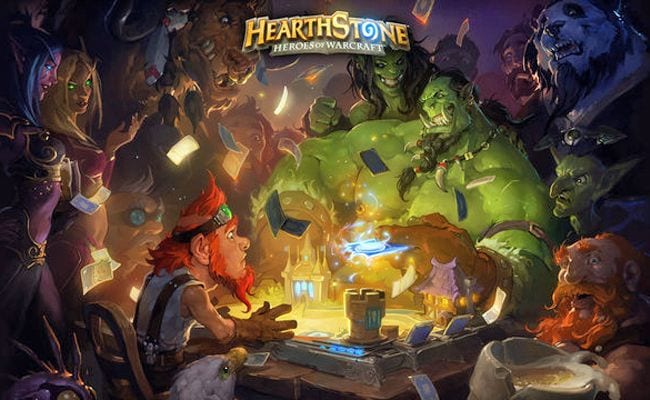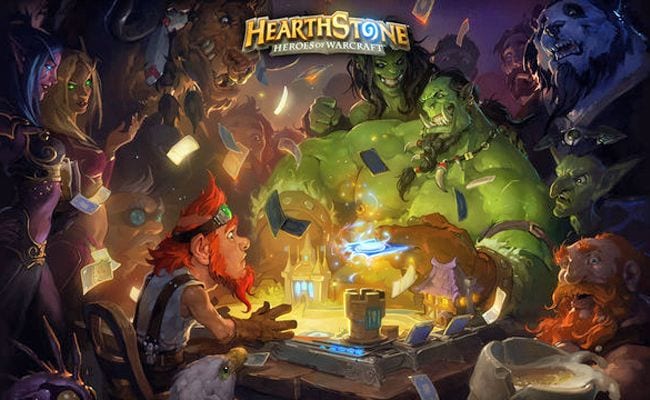
With emerging mobile platforms and the worldwide phenomenon of MOBA (Multiplayer Online Battle Arena) games, free-to-play game models continue to grow in popularity with developers. Freemium models, which have no obligatory monetary investment, but provide an advantage to those who opt in, are particularly vogue in an industry attempting to stave off piracy and bring in as broad an audience as possible. However, as with any evolving business, the most lucrative ideas require a certain level of trial-and-error before they become standard. In the case of free-to-play games, much of the experimentation occurs within the borders of gameplay balance.
As microtransactions increasingly take the place of bulk DLC (Downloadable Content) and full retail-priced games, developers are forced to ask themselves a question: what do gamers ultimately want to pay for? For instance, is it more profitable for them to charge a couple dollars for upgraded weapons and vehicles in a game, or does it make more sense to charge for character skins and outfit changes, items which don’t alter gameplay mechanics, just aesthetics?
Developers in the free-to-play market have to straddle the line between providing high item value and maintaining fair, balanced gameplay for all players. Satisfying both requirements is key; after all, if game progression can only be achieved by buying the best—and most expensive—in-game gear, why make the game “free” in the first place?
Mobile games struggle with this balance more than others. EA’s Tetris Blitz, an updated mobile version of the classic puzzle game, requires no monetary investment by the players insofar as they can technically play for free. On the other hand, the game features a pay model which essentially forces players to shell out their cash if they hope to progress. Blitz’s single player mode revolves around the concept of the player beating high scores set by CPU opponents, an easy enough task for a free player at first.
After the earliest five or six levels, however, the scores get so impossibly high that any reasonably skilled player must employ the use of power-ups, which can often multiply a high score by two or three times. In real world currency, Tetris Blitz’s power-ups range from $2.99 to $5.99. an absurd amount to continue playing a game that has literally zero gameplay variance between levels.
To be fair, the game offers “coins” for every CPU beaten, coins which can be used to buy power-ups. The game even trickles out coins to the player over time, allowing for game progression even without paying. This mechanic, while basically generous on its face, merely serves to perpetuate the scam: power-ups, bought with coins or actual legal tender, are simply used to beat high score after high score of the same level; it’s the same sort of self-perpetuating game model that many mobile developers have been working with for a few years, but what does it give the player? The game offers new players free power-ups, and they can earn plenty of coins by playing, but when they run out of virtual currency, “progression” utterly stops, and it becomes painfully obvious that Tetris Blitz really has nothing to offer besides unchanging gameplay and a money funnel directly into the pockets of perhaps the most financially exploitative game publisher in the world.
Which brings us to mobile developer King’s cash cow, Candy Crush Saga. The game’s payment model works essentially the same as that of Tetris Blitz, except the emphasis is on “lives” rather than power-ups, which works by cutting players off entirely if they aren’t good enough to succeed 100% of the time. This basically serves to cut-out the so-called middle man that is Tetris Blitz’s power-up mechanic: instead of temporarily aiding the player with overpowered bonuses, Candy Crush’s lives mechanic tells them to either get better at the game, wait out their inevitable time-outs, or pay up.
Candy Crush is, for all intents and purposes, a free-to-play game—the player can technically beat the final level without spending a cent, and many have—but the exploitative nature of pinching pennies out of the pockets of players gets obnoxious quickly, especially in the later levels when one have no chance of advancing on a first attempt. As with Tetris Blitz, players can simply wait to refill their lives, but with the addictive nature of these pick-up-and-play games, developers expect many to drop the cash to continue on.
Of course, this model works wonderfully for King and developers with similar pay systems. From a gameplay standpoint, however, is the path of player time-outs and unbalanced power-up mechanics really the path we want to—or should—be headed down?
King and EA’s models work in that they serve themselves, and as long as they do, they won’t change. And why should they? Mobile gamers seem all too willing to shell out a couple bucks for a few more chances to play, or to be granted overpowered power-ups that will put their scores into the stratosphere, far away from the free-to-play crowd. Developers and publishers naturally have the right to ask for money for their games, but when the pay model significantly affects gameplay itself, the consumers have to ask themselves if this is something they want to support. By all means, consumers should give money to the hard-working developers and publishers, but they also need to know that the model won’t get better unless they say something.
Thankfully, the model is evolving. Blizzard’s newly released free-to-play digital card game Hearthstone: Heroes of Warcraft gets closer to ideal pay-to-play balance than perhaps any game before. In Hearthstone, players buy or earn packs of five random cards, with at least one guaranteed rare card in each pack. Card packs introduce a nuanced element of luck and randomness into the pay model; one could theoretically spend $50 on cards and not get the ones she wants, but a new player could open her very first pack and get five rare and strong cards right off the bat. Even still, having the best cards in the game doesn’t guarantee a victory over an experienced free-to-play player with basic cards that knows how to use them.
These aren’t the kind of power-ups found in Tetris, where the power-ups automatically catapult the player up the rankings; one has to know how to use the cards first. This means that new players can jump in and drop money on one hundred cards without intimidating or discouraging more seasoned players and still feel as though they have an advantage.
It helps that it’s fairly quick and easy for free players to obtain card packs as well. Through simple daily quest challenges, players earn gold, which allows them to buy card packs (100 gold) or a trip to the Arena (150 gold), where players battle each other and earn improved rewards based on their performance. Starting an Arena run guarantees a card pack at the end, and, depending on how well the player does, he can make his gold back, or perhaps earn even more. Hearthstone rewards a player’s skill, not their willingness to spend money on the game.
Free-to-play players are given the same advantages as those who pay, but with a bit more of a grind. Quests and the Arena make grinding for gold in Hearthstone interesting because it’s built into the core of the game. Progression isn’t tedious like the one-note gameplay of Tetris Blitz or frustrating and manipulative like the time-outs in Candy Crush Saga, and paid players progress only slightly faster based on how much money they are willing to spend. Overall, a player’s skill is a far more decisive factor in game progression.
Hearthstone encourages all players to keep playing; however after awhile, a problematic question arises: If there’s no reason to pay for card packs or buy an Arena run with real-world money, why pay at all? Buying up card packs still has advantages, and they are advantages that are worth the price without being game-breaking for others. Anyone can be the best in the world without paying a cent, and without much more effort than through spending. However, investing just a few dollars may very well give the needed boost to get there faster.
Of course, Hearthstone, a multiplayer PC game, is far from the mobile puzzle game market where Tetris Blitz and Candy Crush Saga thrive, but this is an industry that is still finding its way around various free-to-play models. The ultimate problem that developers face is how to offer a game to a wide audience that remains accessible, fun, and reasonably competitive for both paid and unpaid players long after the initial investment; after all, the games are being touted as “free-to-play,” so ideally they would be balanced even for those who opt not to pay at all.
Hearthstone offers one of the most balanced models to date, far from the sometimes exploitative and destructive models touted by Tetris Blitz and Candy Crush Saga. As it stands, the majority of free-to-play models merely serve the developer and the publisher while giving the players very little in return. One can only hope that Hearthstone represents a healthy step in the right direction, but for now there are still some industry-wide balance issues that could use adjusting.


![Call for Papers: All Things Reconsidered [MUSIC] May-August 2024](https://www.popmatters.com/wp-content/uploads/2024/04/all-things-reconsidered-call-music-may-2024-720x380.jpg)



